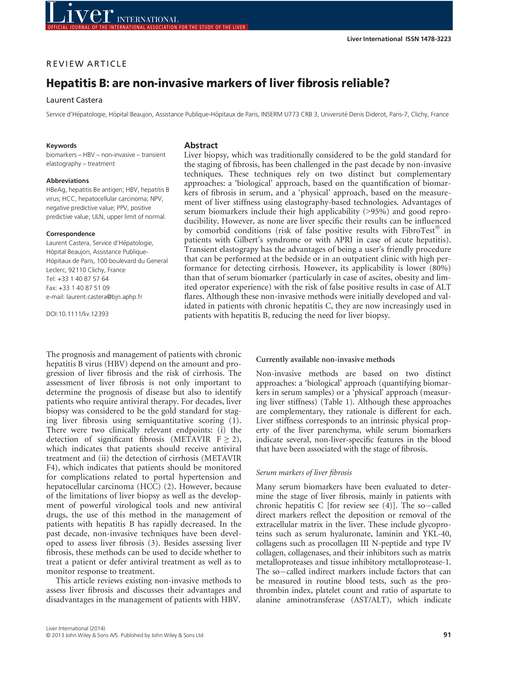Hepatitis B: are non-invasive markers of liver fibrosis reliable?
Liver international : official journal of the International Association for the Study of the Liver
Castéra L
2014 Liver Int. Volume 34 Suppl 1 Issue None
PubMed 24373084 DOI 10.1111/liv.12393
Liver biopsy, which was traditionally considered to be the gold standard for the staging of fibrosis, has been challenged in the past decade by non-invasive techniques. These techniques rely on two distinct but complementary approaches: a 'biological' approach, based on the quantification of biomarkers of fibrosis in serum, and a 'physical' approach, based on the measurement of liver stiffness using elastography-based technologies. Advantages of serum biomarkers include their high applicability (>95%) and good reproducibility. However, as none are liver specific their results can be influenced by comorbid conditions (risk of false positive results with FibroTest in patients with Gilbert's syndrome or with APRI in case of acute hepatitis). Transient elastograpy has the advantages of being a user's friendly procedure that can be performed at the bedside or in an outpatient clinic with high performance for detecting cirrhosis. However, its applicability is lower (80%) than that of serum biomarker (particularly in case of ascites, obesity and limited operator experience) with the risk of false positive results in case of ALT flares. Although these non-invasive methods were initially developed and validated in patients with chronic hepatitis C, they are now increasingly used in patients with hepatitis B, reducing the need for liver biopsy.
Citation Reference:

